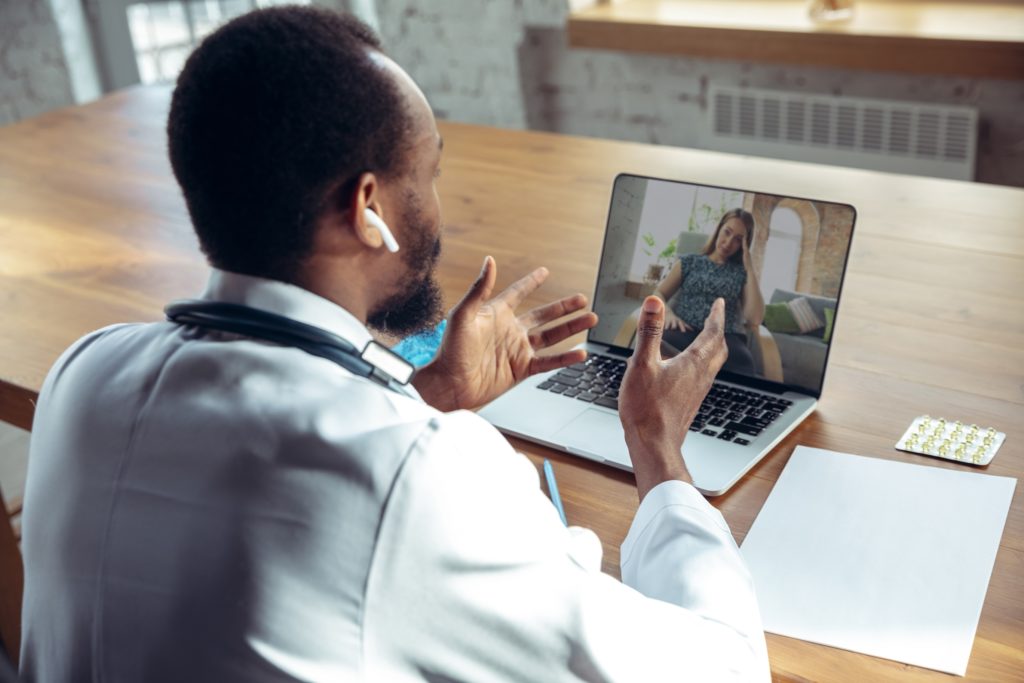Recentering Patient Care in Workers Compensation Injury Management
By Dr. Dan Carlin and Cal Beyer
This is part 2 of a series. The first article, called “How Telemedicine Improves Workers’ Compensation Outcomes,” was also written by Dr. Carlin and Mr. Beyer. You can read it on CURT’s website here.
Why Workers Compensation is Ripe for Innovation (and Disruption)
Today, injured workers still get almost all of their medical care in person. When an injury occurs, workers leave their workplace for initial care at an urgent care clinic or hospital emergency room (ER). The more severe injuries are then referred to specialists. Nurse case managers and claims administration staff endeavor to ensure that these events happen on time and are paid for in a timely manner. These fundamental elements have changed little in the last 40 years.

The current model of Workers’ Compensation care is poised to undergo major transformational change. There has been a lack of urgency to adapt to the times by failing to leverage technology to expedite and personalize the delivery of patient care.
Change is underway, spurring innovation and threatening to disrupt the status quo of patient medical care. Two advances are gaining ground that point to increasing adoption of innovation in Workers’ Compensation patient care:
- Telemedical care
- “Whole person” approaches to patient care
These changes have been happening slowly at first, but they are quickly gaining momentum and will eventually transform the entire industry. The Workers’ Compensation system continues to be behind schedule. Although the timeline for this transformation is uncertain, the outcome is inevitable. Innovative and disruptive technology offers many benefits, including streamlining care pathways, expedited healing and recovery, and substantive cost containment.

Advantages of Modern Telemedicine Injury Management Over Traditional Medical Management
The first phase of this change is telemedicine. This innovation has brought physician presence to today’s worksite so workers can be seen within minutes of their injury. This initial triage results in faster, more accurate referrals to care and often helps avoid the ER – the usual starting point for worker dissatisfaction and unnecessary healthcare cost escalation.
A new generation of telemedical-trained medics is connecting with on-call board-certified physicians to deliver virtually equivalent ER care in the field. This enables an injured worker’s care journey to be more likely to start at their workplace. This should reduce uncertainties, delays, and other variables in the patient care journey. This is especially true for urgent care-type injuries, such as soft tissue injuries, sprains and strains, and anything not requiring surgical intervention. These advances will undoubtedly save lives, expedite specialist referrals, and improve recovery outcomes. They will also likely cut the claims costs as a proportion of injury care migrates from the urgent care clinic to the worksite.
How a Whole Worker Approach to Injury Management is Advantageous
The second phase of transformation change begins: treating the “whole worker.” Beyond the physical severity of an injury, the number one variable that drives Workers’ Compensation costs is the worker’s willingness – or unwillingness – to engage in the recovery process.
The decision to engage is based on the worker’s trust in the process and the worker’s emotional experience of their care. Suppose their care journey is characterized by a lack of clear communication, unexplained delays in care, and confusion around the roles of providers and administrators. In this case, the worker will disengage, ultimately causing claims costs to rise. This frustration and distrust can result in injured workers seeking legal representation to protect their rights, further threatening to delay healing and increase the total claim cost.
In contrast, the “whole worker” model bundles telemedicine with end-to-end physician case management. This approach delivers easy physician access and complete accountability that helps injured workers decide to trust the process and personally engage in their own recovery. The worker’s emotional response to this experience is to trust the process and actively participate in their own recovery. The result of this patient-centric care model is feeling cared for by being seen, heard, and having an empathetic personal care advocate rather than a busy ER doctor rushing to see the next triaged patient in the queue.

Conclusion
Telemedicine positively impacts Workers’ Compensation injury reporting, care delivery, and recovery management. The “end-to-end” physician case management telemedicine offers coordinated patient-centric care. There are five major benefits of this “whole worker” approach:
- Delivering immediate telemedical care at the worksite to expedite care.
- Coordinating and overseeing all immediate offsite care, including direct physician-to-physician communication with all referred specialists and recovery services.
- Supporting timely and efficient administrative responses to facilitate employee return-to-work status reporting and ongoing claims reporting with the insurance broker and Workers’ Compensation carrier.
- Building trust with the injured workers through a personalized concierge medicine experience in which they are the center of attention and all anxieties and obstacles to achieving their maximal recovery are removed.
- Driving superior medical outcomes through expedited care and faster recoveries, resulting in major savings in claims costs that often exceed 50 percent or greater.
Telemedicine in Workers’ Compensation can benefit the stakeholders in the construction ecosystem. This innovation’s beneficiaries include injured workers, general contractors, subcontractor trade partners, and ultimately, the owners and developers financing and contracting the work being performed. When workers’ Compensation processes and outcomes are optimized, all stakeholders win.
Daniel Carlin, MD, is CEO of JobSiteCare. After a decade of experience in demanding healthcare environments, he pioneered JobSiteCare’s innovative concierge telemedicine model. Dr. Carlin is a national leader in the field of telemedicine. He is a board-certified emergency physician and former U.S. Navy medical officer and is a frequent speaker to medical and international development audiences. He has been a featured presenter at the Construction Risk Conference hosted by the International Risk Management Institute in 2022 and 2023.
Dr. Carlin has spoken at institutions such as the MIT Media Lab, the United States Naval Academy and professional conferences such as the American Telemedicine Association and the International Development Council. Dr. Carlin’s work has been featured in The Hill, Business Week, Forbes, Fortune, FT, The New York Times, The Wall Street Journal, and Worth. Dr. Carlin has also been a guest speaker on The Today Show, Dateline NBC, and The Oprah Winfrey Show. Learn more at www.jobsitecare.com or via email at mrusso@jobsitecare.com
Cal Beyer, CWP, is Sr. Director for the national nonprofit SAFE Project (Stop the Addiction Fatality Epidemic). In this role, he educates, equips, and empowers employers to address holistic workplace mental health and recovery strategies to reduce fatalities related to addiction and overdose. He has over 30 years of experience in risk management, insurance, and safety/health as a human capital risk and worker wellbeing consultant.
Cal helped launch the Construction Industry Alliance for Suicide Prevention in 2016. He serves on the Executive Committee of the National Action Alliance for Suicide Prevention and on Advisory Boards for Goldfinch Health, MindWise Innovations, and the Suicide Prevention Resource Center. You can contact Cal Beyer at cal@safeproject.us or via cell at 651-307-7883.